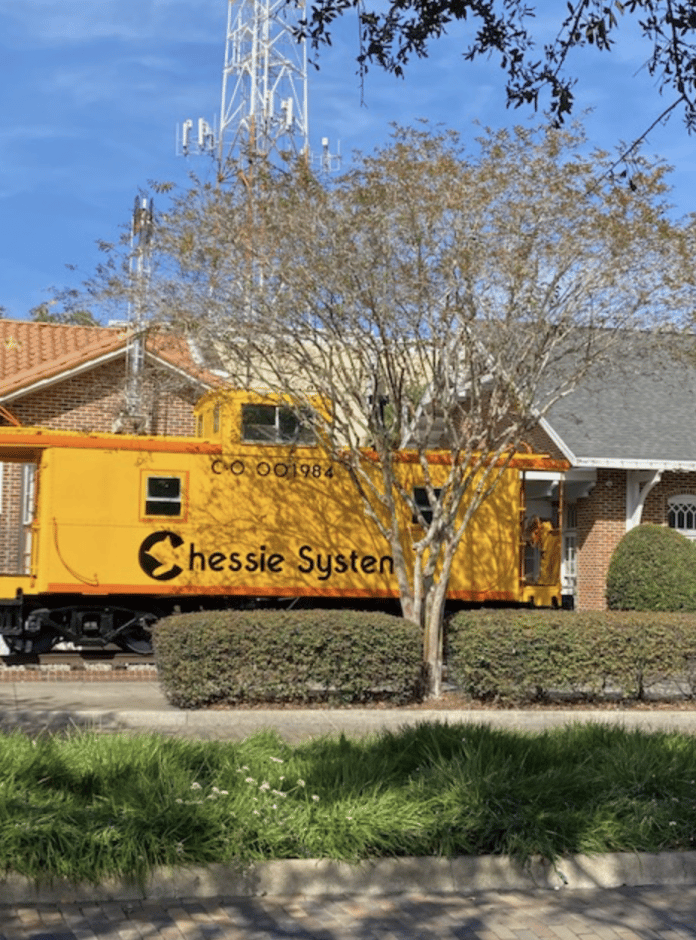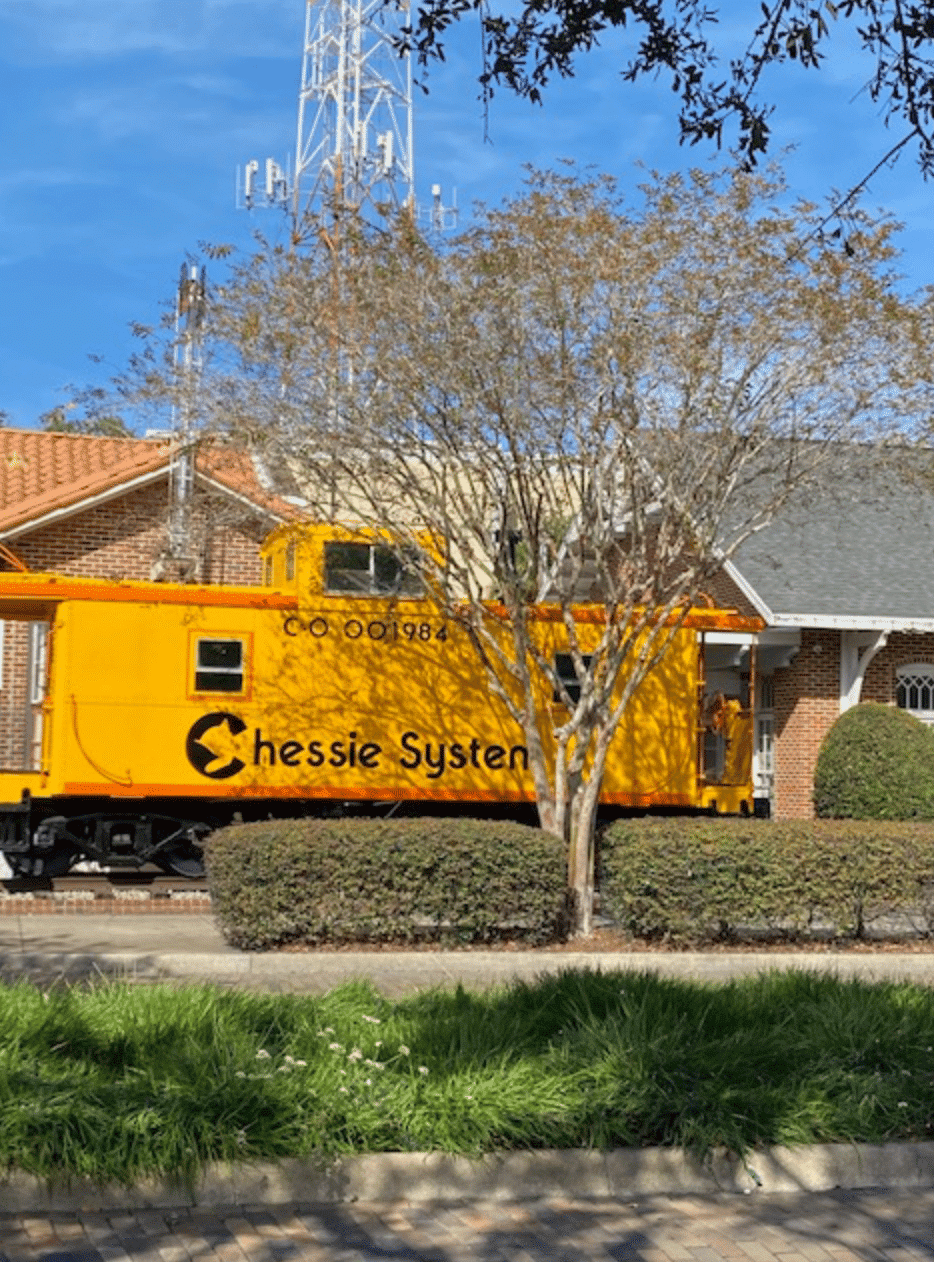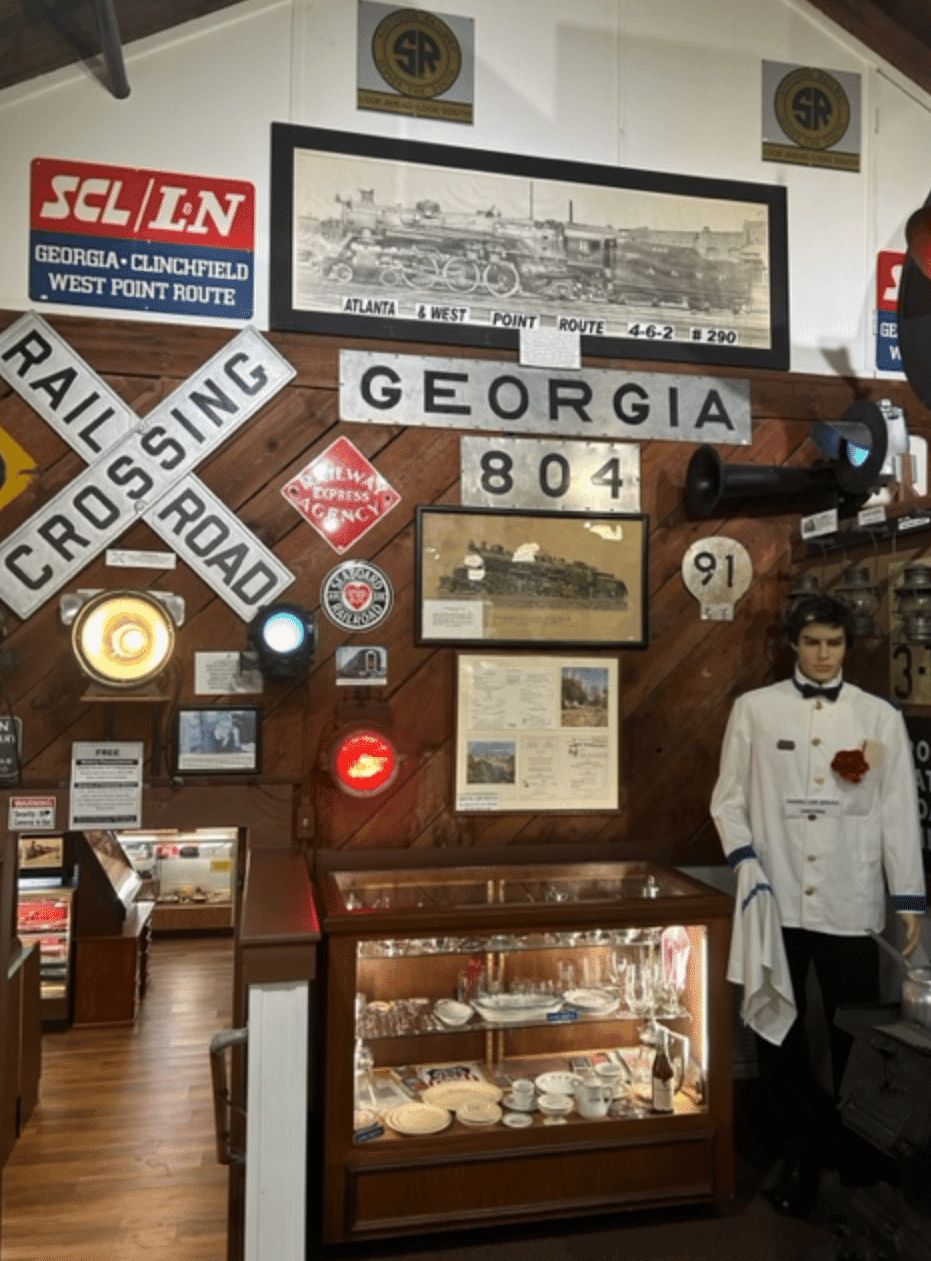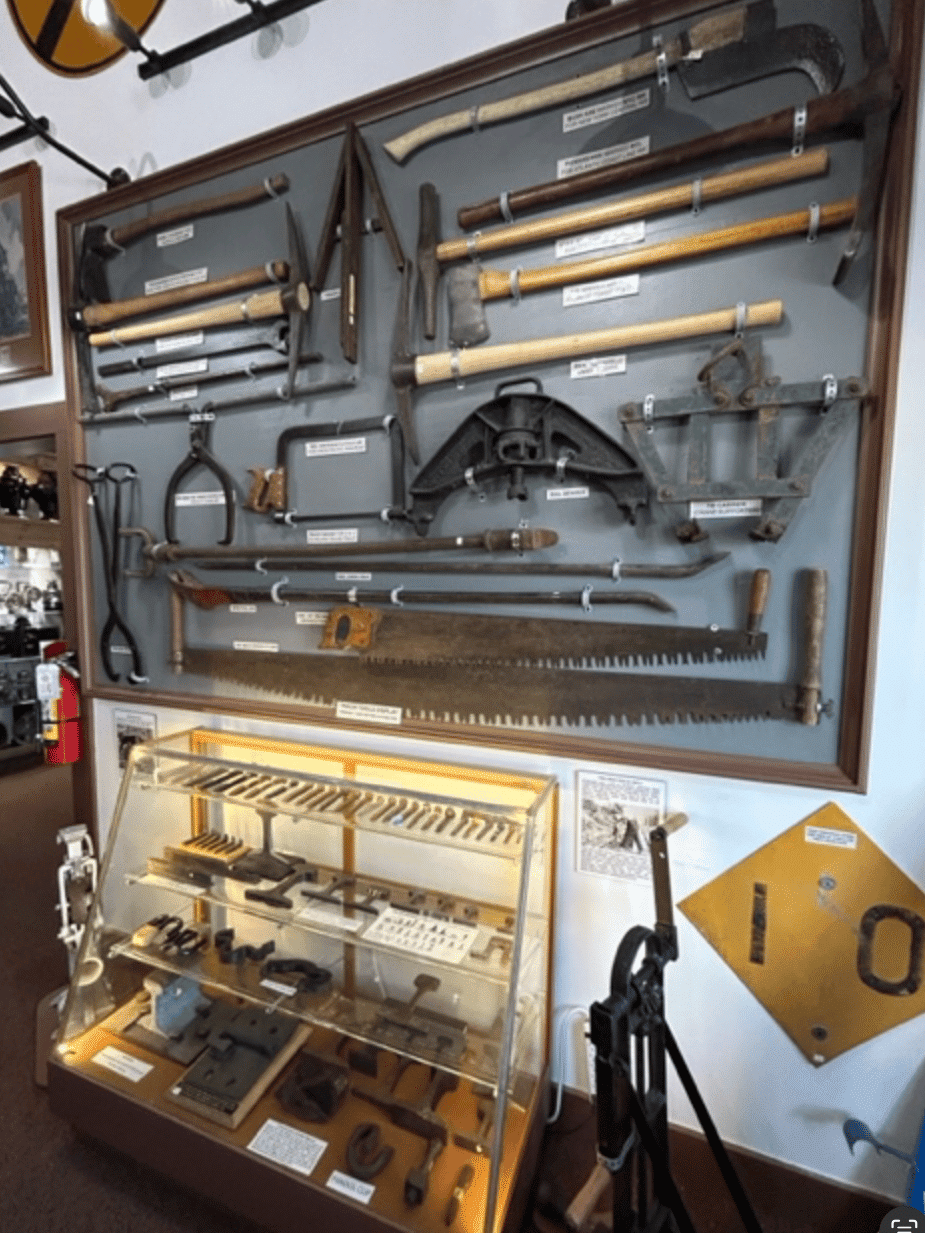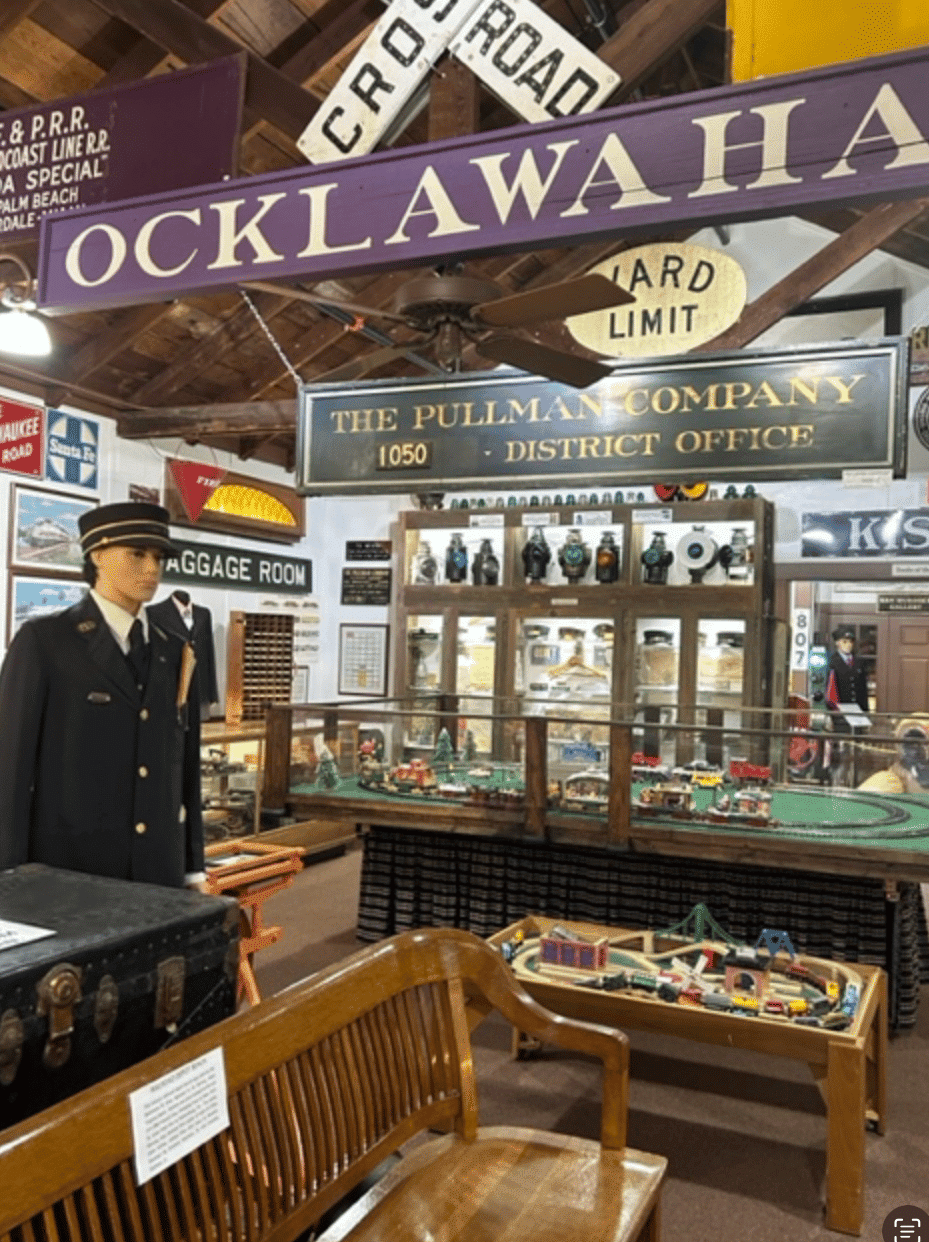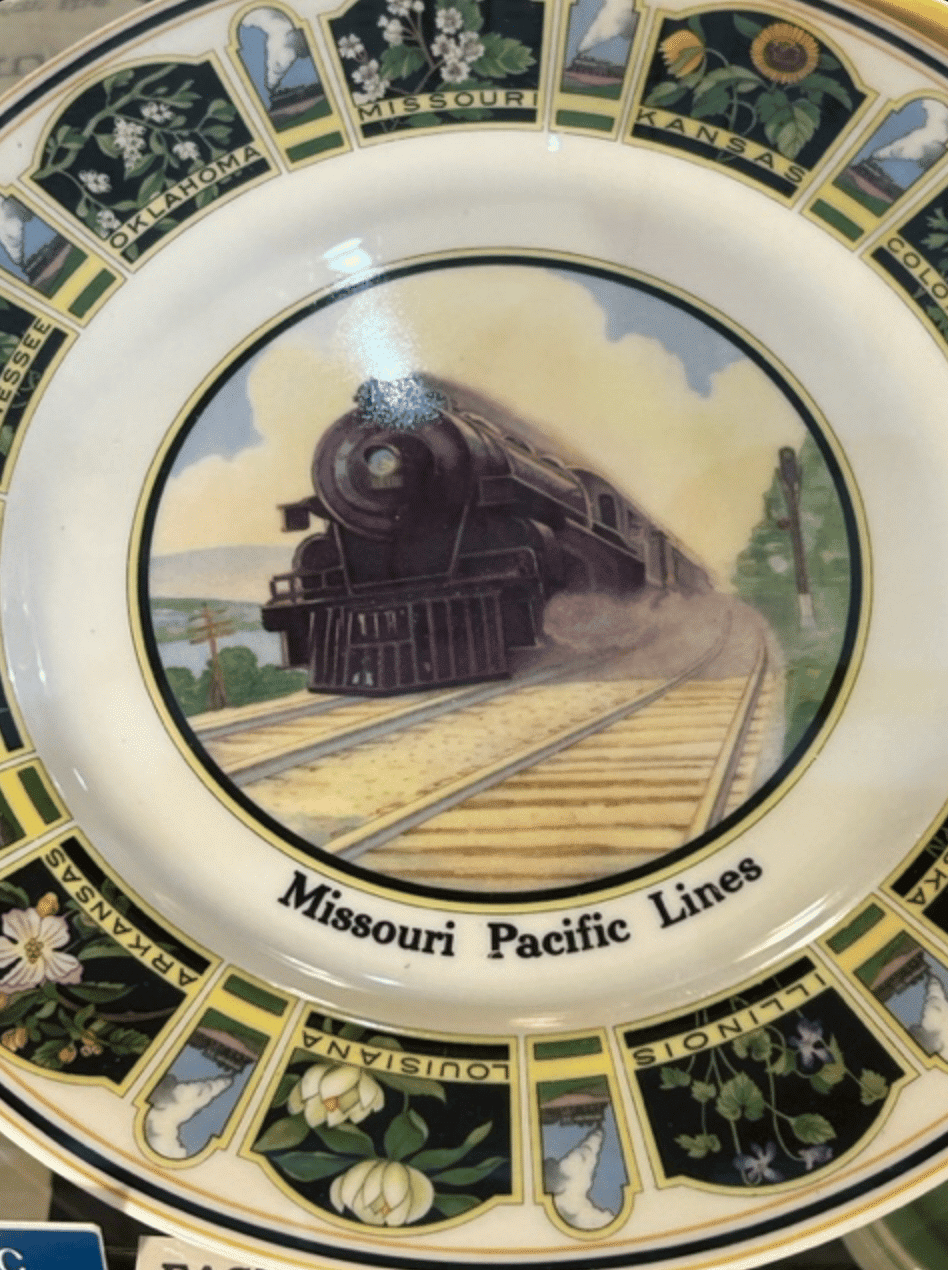I have always loved trains. If one passes by today, I’ll take note. Where’s it going? Why are they going so slow or fast? I don’t consider waiting on a train a nuisance or disruption to my day. A train is always worth a second look. It’s a necessary part of our economy. It’s also a connection. It takes me to some of my favorite memories of growing up.
In the 1950s and 1960s, there were always trains running through our small community of Masaryktown. Railroad tracks ran parallel to Hwy 41 and still do today. The familiar trains of the 1960s were operated by Seaboard Coast Line Railroad; today, it’s mostly CSX. I remember Dad driving across those train tracks many times. We crossed them on Wilson Blvd. every time we headed home to the farm.
A railroad crossing wasn’t marked so well back then. No flashing lights. No ringing bells or crossing gate coming down. Just posts on either side and signs. There was an X cross buck sign saying “Railroad Crossing” and another one saying “Watch Out For The Cars.” As you approached the crossing, you paid attention. If you spotted a distant engine headlight, it meant that a train was on the way. Was it safe enough to cross, or should you wait? As a youngster, I didn’t mind the waiting. A train was an exciting thing to see, and there was nothing like the anticipation of the last car. I wanted to wait and see the caboose!
The term caboose is almost 200 years old. It can be traced to the 1830s when someone had the idea to build a shanty (house) onto the last train car. The shelter was a buffer from the weather and helped protect a fire from the wind. The last car became known as the caboose. It’s possible the name came from the Dutch word “kombuis.” That’s an archaic word for a kitchen on a ship’s deck; it’s a name for a ship’s galley.
The familiar caboose lookout post, or cupola, was added later. In 1863 a conductor discovered he could see the rest of the train much better while sitting on boxes, especially when he popped his head up through an opening in the boxcar roof. So a cab-like platform was developed. The area later came with look-out seats for each side.
Who rode on the caboose? A workman was needed for switching tracks or shunting. Shunting was the job of safely moving a train between yards and platforms. The workman also monitored the load and hopped off if necessary to address a problem. Another man was needed to protect him while he was off the train. So in each caboose, you would find a brakeman and a flagman. And you would also find a conductor.
Cabooses were equipped much like small apartments. They had make-shift beds, bench seating, and built-in tables. They used a potbelly cast iron stove for heating and cooking. The stove was a massive piece bolted to the floor. It had a special cooking lip to prevent spills and a double-latched door to prevent hot coals from escaping. Workmen made simple meals and heated coffee but later experimented with tried and true family recipes. It couldn’t have been easy to regulate the heat on those old stoves! Men were away from home so often that they often put out family photos and hung curtains in caboose windows!
A conductor was often assigned a caboose for his exclusive use. With a desk and chair, the rail car was his place to do paperwork. Conductors had busy jobs. They did much more than collect and punch tickets. They were in charge of an essential piece of paper, the “waybill.” This detailed document listed each rail car and its cargo. Cars were individually identified, numbered, and tracked from the point of origin to the final destination. The conductor handled the accounting of the train and its load. Can you imagine knowing the status of dozens of cars at any given time?
The caboose was also used for equipment storage. It carried shovels, chains, wrenches, couplers, lanterns, and tools needed to help the train run smoothly and efficiently. The men knew where everything was and could hop off at a moment’s notice.
Early railroad lanterns were an important form of communication. They were used to signal, especially at night or during bad weather. Workmen back then had no radios or walkie-talkies. Railroad yards were noisy environments. Shouting out commands was not very practical. With a combination of lanterns and hand signals, each workman knew what to do. He knew whether to stop, hold in place, back up, or go ahead. Later, colored globe lanterns made things easier. Each color had meaning. A red globe lantern meant stop or danger. Clear or white globes meant to proceed. And green meant to use caution. Later green would mean to approach. These lantern colors became the precursor to today’s familiar traffic signals.
Wooden or metal cabooses were often painted red for safety reasons. Some companies, however, painted them a different color to match their locomotive or freight cars. The 1948 Chesapeake and Ohio Caboose on display in downtown Winter Garden is painted bright yellow. When their downtown Heritage Museum is open, you can climb aboard it and look around. The furnishings inside are simple and sparse. Can you imagine what it must have been like back then? Not very glamorous!
The Central Florida Railroad Museum in Winter Garden is located a few blocks from that yellow caboose and well worth a stop. The museum has an extensive collection of railroad memorabilia and fascinating displays. For example, did you know that most railroad lines had their own china pattern and silverware? Train company logos were everywhere. They appeared on dishes, menus, ashtrays, and various articles of clothing. This branding made each item instantly recognizable as belonging to that particular railroad line.
Improved technology spelled the end of the line for the caboose. By the late 1960s and early 1970s, sensors were developed to detect axle or signal problems. In addition, end-of-train devices were devised that could monitor brake pressure and alert workers to the accidental separation of cars.
Newer diesel locomotives were far larger and could hold more men. All workmen could ride up front. New monitoring technology really changed things, too. It just wasn’t practical to have a special crew on the back anymore. By the 1980s, the caboose was obsolete.
Today you might see a caboose on display at a museum. Or you might find one in a city park, where they’ve purchased it to add to the landscape. You might see an old refurbished caboose advertised as a motel room for the night. Or you might even see one abandoned in a field somewhere, a ghost of the past.
Today I live within two miles of a railroad crossing. Sometimes I hear the train whistle, especially at night, as it announces its crossing approach. It’s a comforting sound that carries a long distance and reminds me of years past.
I remember my childhood anticipation of waiting. I counted cars as the train rolled along on the tracks. I recall the workman in the high seat as he stuck out his hand through the caboose’s open window. He’d always have a friendly wave, just for me!
And then the train, like the memory, sped out of sight.
Places of Interest:
Central Florida Railroad Museum
101 South Boyd Street
Winter Garden FL 34787
Housed in a circa 1913 railroad station–
various railroad displays and exhibits
Closed Sundays and Mondays.
Open all other weekdays 11 am-3 pm
Free Admission. Donations welcomed.
Winter Garden Heritage Foundation
History Research and Education Center
21 East Plant Street
Winter Garden FL 34787
Various county exhibits, people, and places.
Citrus industry room
Closed Sundays and Mondays
Open all other weekdays 11 am-3 pm
Free Admission.
The Red Caboose Motel
312 Paradise Ln
Ronks Pennsylvania
Historic railroad cabooses converted to motel rooms!
1-888-687-5005
Their motto:
“Sleep in a caboose tonight and wake up on the
right track tomorrow!”

